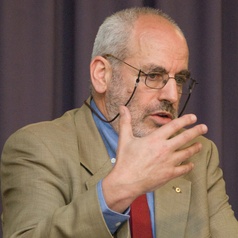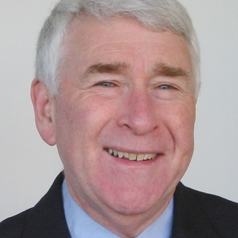This week the federal government granted its first license for an Australian company to grow and harvest medical marijuana.
This follows Australia’s amending of the Narcotic Drugs Act 1967 to legalise the production and use of cannabis for medicinal purposes. The amendment came in February 2016, a year after the death of campaigner Daniel Haslam.
Daniel suffered distressing side effects of chemotherapy, some of which were ameliorated by cannabis. While these changes sound promising for sufferers like Daniel, if he were alive today, he would still not be able to lawfully obtain medicinal cannabis.
Despite the media attention, extensive political and medical commentary on the subject, and the fact that more than two thirds of Australians have supported medicinal cannabis for many years, a patient with a clear cut and widely accepted case for being able to use lawful medicinal cannabis would still be unable to.
So far, only a few patients have been able to obtain lawful medicinal cannabis, and only after a long and difficult struggle.
Why is it taking so long?
There are a number of factors slowing down the availability of lawful medicinal cannabis in Australia.
With a multitude of natural chemical constituents, some of which are psychoactive - meaning mood, thinking and perception may be altered, perhaps pleasurably - cannabis is more complicated than most other pharmaceutical products. Cannabis can be used by way of a number of botanical products as well as partially purified or synthetic pharmaceutical preparations.
Much research is being invested in determining the components to treat particular medical conditions. For example, a widely studied cannabis plant extract has been used to treat pain resulting from nerve damage.
Since the mid 20th century, western medicine has preferred highly purified extracts of plants or synthetic products to provide greater certainty about effectiveness, side effects and dose.
Plant-based drugs containing mixtures of constituents such as Omnopon, a painkiller derived from opium, and digoxin, a heart medication derived from the foxglove plant, were regulated and successfully used in western medicine from the 19th century until a generation ago when more purified preparations became readily available.
A political decision was made in 2016 that medicinal cannabis would be regulated through the Therapeutic Goods Administration (TGA), the section of the Australian Government Department of Health that oversees the regulation of drugs.
Although this may seem an intuitive decision, medicinal cannabis is very different from the usual drugs, such as antibiotics and diuretics, that the TGA has an excellent reputation for regulating. Because of its difference, some countries wisely created a separate Office of Medicinal Cannabis to regulate this drug.
By allocating medicinal cannabis to the TGA, the system is now skewed to an inappropriate, rigid and narrow approach that is also slow moving.
Consulting with those affected
Australia’s response to HIV in the 1980s helped to prevent a national epidemic, saved many lives and saved billions of dollars. It was used as a model by other countries.
One of the fundamental principles was involving men-who-have-sex-with-men, sex workers, and people who injected drugs in policy discussions. Thirty years later, patients and consumers are not equal partners in the policy discussions about medicinal cannabis. They’re merely occasional members of the audience.
Government officials, researchers and doctors joined by patients and consumers all working together will produce better and likely less expensive policy.
Most concerns are unwarranted
Some critics of medicinal cannabis have argued that its side effects, which can include drowsiness and slight euphoria, are unacceptable. But as with all medicines, what really matters is the extent to which the benefits outweigh the risks, especially in the context of a particular patient and their symptoms and condition.
Cannabis can have side effects, but these are generally fairly modest and certainly less serious than those of many medicines used for comparable treatments. Many commenting on the side effects of medicinal cannabis assume these will be much the same as the side effects of recreational cannabis sourced from the black market, and taken with the intention of experiencing the psychogenic effects.
But the side effects of medicinal cannabis used under medical supervision can be expected to be milder than those from recreational cannabis bought on the black market.
In a recent study of chronic pain treated with medicinal cannabis with 274 participants, nine had mild to moderate, and two had serious, side effects.
It’s hard to avoid the conclusion that the perceived clash between medicinal cannabis and our decades-long commitment to drug prohibition is now the major impediment slowing the introduction of medicinal cannabis in Australia.
Government officials seem to fear that some lawful medicinal cannabis might be diverted to the vast black market for the drug. However, the Queensland cannabis market was estimated to have a similar value to the sugar or wheat market in that state. An economist estimated Australians spend twice as much on cannabis as wine.
It’s time Australia took lawful medicinal cannabis for what it is: a useful drug to palliate distressing symptoms in some medical conditions when conventional medicines have failed.
The slower and more restrictive the system for medicinal cannabis, the more likely patients and their families will avail themselves of black market supplies. Given we can’t be sure of the quality and safety of these products, and given the high street price tag, surely we can do better for patients in desperate need.
The authors are grateful to Lucy Haslam, Co-Founder and Director United in Compassion, for her assistance with the preparation of this article.
 Alex Wodak is affiliated with the Australian Drug Law Reform Foundation
Alex Wodak is affiliated with the Australian Drug Law Reform Foundation
Laurence Mather does not work for, consult, own shares in or receive funding from any company or organisation that would benefit from this article, and has disclosed no relevant affiliations beyond the academic appointment above.



 Eye infections might seem like a minor complaint – but in some cases they can cause blindness and even death
Eye infections might seem like a minor complaint – but in some cases they can cause blindness and even death  Traditional Japanese diet associated with less brain shrinkage in women compared to western diet, says research
Traditional Japanese diet associated with less brain shrinkage in women compared to western diet, says research  What the Boeing whistleblower’s death reveals about exposing corporate wrongdoing in North America
What the Boeing whistleblower’s death reveals about exposing corporate wrongdoing in North America  Study links microplastics with human health problems – but there’s still a lot we don’t know
Study links microplastics with human health problems – but there’s still a lot we don’t know  Senators Push for Stablecoin Regulation to Protect US Dollar Dominance
Senators Push for Stablecoin Regulation to Protect US Dollar Dominance  An apple cider vinegar drink a day? New study shows it might help weight loss
An apple cider vinegar drink a day? New study shows it might help weight loss  Gut microbiome: meet Roseburia intestinalis — the energy-producing bacterium that helps us fight against disease
Gut microbiome: meet Roseburia intestinalis — the energy-producing bacterium that helps us fight against disease  Child health is in crisis in the UK – here’s what needs to change
Child health is in crisis in the UK – here’s what needs to change  SEC approves first US climate disclosure rules
SEC approves first US climate disclosure rules  Pfizer Settles Antitrust Claims for $93 Million
Pfizer Settles Antitrust Claims for $93 Million  Type 2 diabetes is not one-size-fits-all: Subtypes affect complications and treatment options
Type 2 diabetes is not one-size-fits-all: Subtypes affect complications and treatment options  What’s next for $25B supermarket supermerger after FTC sues to block it, saying it could raise prices
What’s next for $25B supermarket supermerger after FTC sues to block it, saying it could raise prices  Eating some chocolate really might be good for you – here’s what the research says
Eating some chocolate really might be good for you – here’s what the research says 
































